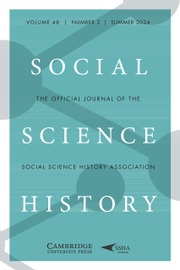Article contents
Transition of Credit Organizations: Caste Bankers in Colonial India
Published online by Cambridge University Press: 07 April 2017
Abstract
This paper looks at the evolution of business practice of indigenous banking groups in colonial India. Specifically, it studies why in the early twentieth century, the Indian banking caste Nattukottai Chettiar moved from caste-based banking to joint stock banking. The paper argues that caste-based banking had two advantages over joint stock banking—caste-based monitoring of agents and reciprocity-based informal insurance within the caste. In the early twentieth century with the improvement of communication technology and expanding global trade, the caste banking lost both the edges. This prompted some of the caste bankers to move to joint stock banking. I provide a theoretical structure explaining the transition and provide evidence from archival and secondary sources in support of my theory.
Information
- Type
- Articles
- Information
- Copyright
- Copyright © Social Science History Association, 2017
References
References
Report of the Burma Provincial Banking Enquiry Committee (1930). Vol. 1.
The Indian Central Banking Enquiry Committee (1931). Vol. 1, Part II.
Report of the Madras Provincial Banking Enquiry Committee (1931). Vol. 1.
Madras Provincial Banking Enquiry Committee (1931). Vol. 2—Written Evidence.
Report of the Indian Industrial Commission (1916–18a).
Report of the Indian Industrial Commission (1916–18b)—Minutes of Evidence. Vol. 3, Madras and Bangalore.
New Law Reports Sri Lanka, http://www.lawnet.lk/vol_index.php?id=14.
Statistical Abstract Relating to British India, Her Majesty's Stationary Office, Digital South Asian Library, http://dsal.uchicago.edu/statistics/.
Correspondence of Bank of Bengal to Rangoon (1903: CBBR 1903). Document no. BR/Rgoon/Cor/005. 281, State Bank of India archive, Kolkata.
STBI: Statistical tables relating to Banks in India (1925)
- 1
- Cited by

